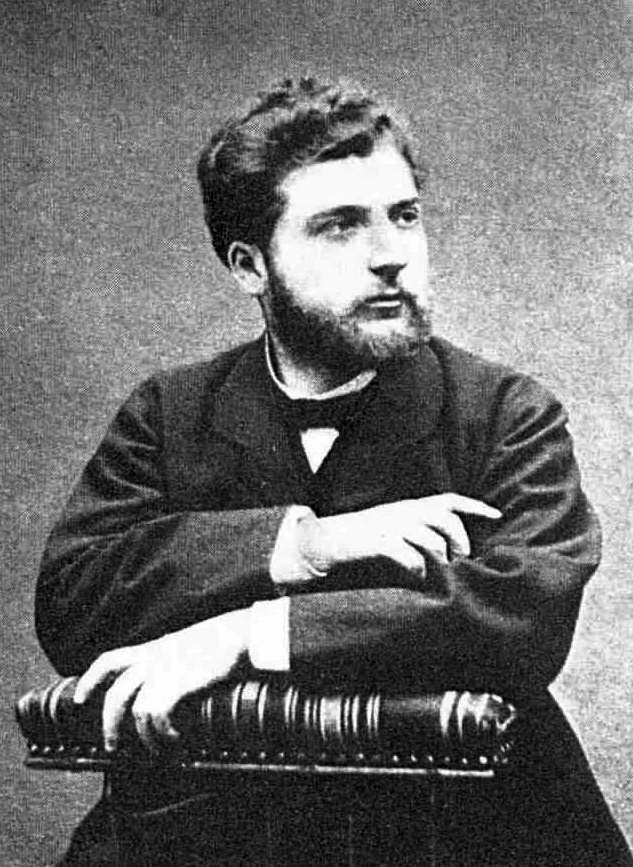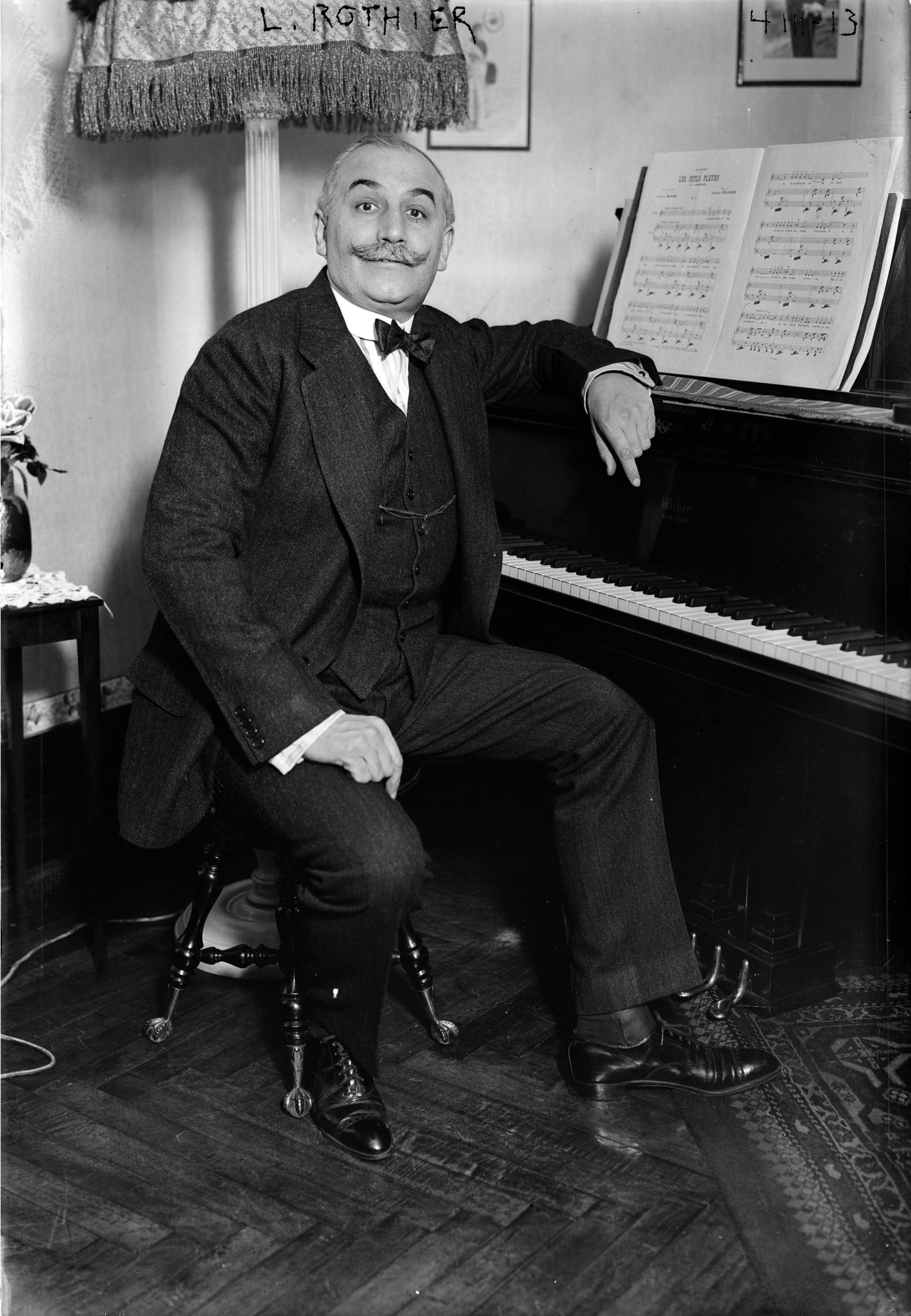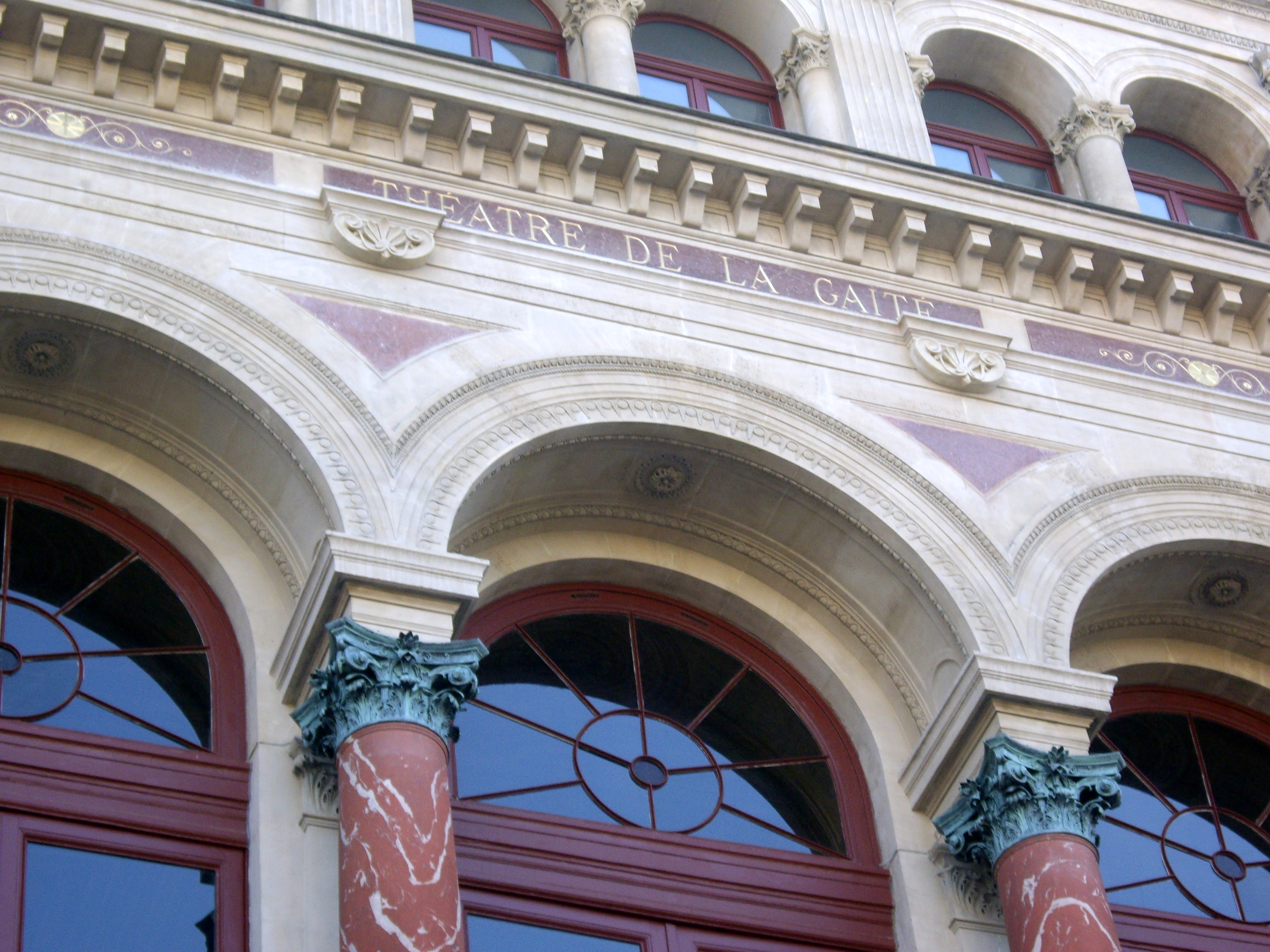|
Paul Lhérie
Paul Lhérie (Lévy), (born 8 October 1844 in Paris; died 17 October 1937 in Paris) was a French tenor, then baritone, and later a vocal teacher. He was most famous for creating the role of Don José in Bizet's ''Carmen''. Life and career After studying in Paris, Lhérie made his debut at the Opéra-Comique in 1866 as Méhul's '' Joseph''. He created the role of Charles II in Massenet's ''Don César de Bazan'' in 1872, Kornélis in Camille Saint-Saëns's '' La princesse jaune'' in 1872, Benoît in Delibes's '' Le roi l’a dit'' in 1873, and Don José in ''Carmen'' by Bizet in 1875. Bizet and Lhérie became friends during the preparations for ''Carmen''. They would swim together in the Seine during the singer's visits to the composer's house in Bougival. He became a baritone in 1882, singing Posa in the first performance of the Italian revised version of Verdi's '' Don Carlos'' at La Scala, Milan, two years later. He also spent time during the 1880s at Covent Garden in Londo ... [...More Info...] [...Related Items...] OR: [Wikipedia] [Google] [Baidu] |
Paul Lhérie 1890 - Gallica
Paul may refer to: *Paul (given name), a given name (includes a list of people with that name) * Paul (surname), a list of people People Christianity * Paul the Apostle (AD c.5–c.64/65), also known as Saul of Tarsus or Saint Paul, early Christian missionary and writer * Pope Paul (other), multiple Popes of the Roman Catholic Church *Saint Paul (other), multiple other people and locations named "Saint Paul" Roman and Byzantine empire *Lucius Aemilius Paullus Macedonicus (c. 229 BC – 160 BC), Roman general *Julius Paulus Prudentissimus (), Roman jurist *Paulus Catena (died 362), Roman notary *Paulus Alexandrinus (4th century), Hellenistic astrologer *Paul of Aegina or Paulus Aegineta (625–690), Greek surgeon Royals *Paul I of Russia (1754–1801), Tsar of Russia *Paul of Greece (1901–1964), King of Greece Other people * Paul the Deacon or Paulus Diaconus (c. 720 – c. 799), Italian Benedictine monk *Paul (father of Maurice), the father of Maurice, B ... [...More Info...] [...Related Items...] OR: [Wikipedia] [Google] [Baidu] |
Les Pêcheurs De Perles
' (''The Pearl Fishers'') is an opera in three acts by the French composer Georges Bizet, to a libretto by Eugène Cormon and Michel Carré. It was premiered on 30 September 1863 at the Théâtre Lyrique in Paris, and was given 18 performances in its initial run. Set in ancient times on the island of Ceylon (Sri Lanka), the opera tells the story of how two men's vow of eternal friendship is threatened by their love for the same woman, whose own dilemma is the conflict between secular love and her sacred oath as a priestess. The friendship duet "", generally known as "The Pearl Fishers Duet", is one of the best-known in Western opera. At the time of the premiere, Bizet (born on 25 October 1838) was not yet 25 years old: he had yet to establish himself in the Parisian musical world. The commission to write ' arose from his standing as a former winner of the prestigious Prix de Rome. Despite a good reception by the public, press reactions to the work were generally hostile and dis ... [...More Info...] [...Related Items...] OR: [Wikipedia] [Google] [Baidu] |
Léon Rothier
Léon Rothier (December 26, 1874 – December 6, 1951) was a French operatic bass who enjoyed a long association with New York's Metropolitan Opera. Biography Rothier was born in 1874 in Reims, in the Champagne-Ardenne ''région'' of northern France. In this city he began his career as a violinist, but afterwards traveled to the Conservatoire de Paris to study voice. In 1899, he made his singing debut at the Opéra-Comique in Paris, in Charles Gounod's ''Philémon et Baucis''. One year later, he participated in the premiere of Gustave Charpentier's '' Louise''. Rothier left the Opéra-Comique in 1907, and after some short stints with a few smaller French opera companies, moved to the United States, beginning a 30-year association with the Metropolitan Opera in New York City. He created the role of Grandfather Tyl in '' L'oiseau bleu'' by Albert Wolff (1919). He was still fulfilling public singing engagements in New York City as late as 1949, at The Town Hall performance space. ... [...More Info...] [...Related Items...] OR: [Wikipedia] [Google] [Baidu] |
Paris Conservatoire
The Conservatoire de Paris (), also known as the Paris Conservatory, is a college of music and dance founded in 1795. Officially known as the Conservatoire National Supérieur de Musique et de Danse de Paris (CNSMDP), it is situated in the avenue Jean Jaurès in the 19th arrondissement of Paris, France. The Conservatoire offers instruction in music and dance, drawing on the traditions of the 'French School'. Formerly the conservatory also included drama, but in 1946 that division was moved into a separate school, the Conservatoire National Supérieur d'Art Dramatique (CNSAD), for acting, theatre and drama. Today the conservatories operate under the auspices of the Ministry of Culture and Communication and are associate members of PSL University. The CNSMDP is also associated with the Conservatoire National Supérieur de Musique et de Danse de Lyon (CNSMDL). History École Royale de Chant On 3 December 1783 Papillon de la Ferté, ''intendant'' of the Menus-Plaisirs du Roi, pro ... [...More Info...] [...Related Items...] OR: [Wikipedia] [Google] [Baidu] |
Opéra Comique
''Opéra comique'' (; plural: ''opéras comiques'') is a genre of French opera that contains spoken dialogue and arias. It emerged from the popular '' opéras comiques en vaudevilles'' of the Fair Theatres of St Germain and St Laurent (and to a lesser extent the Comédie-Italienne), M. Elizabeth C. Bartlet and Richard Langham Smith"Opéra comique" '' Grove Music Online''. Oxford Music Online. 19 November 2009 which combined existing popular tunes with spoken sections. Associated with the Paris theatre of the same name, ''opéra comique'' is not necessarily comical or shallow in nature; '' Carmen'', perhaps the most famous ''opéra comique'', is a tragedy. Use of the term The term ''opéra comique'' is complex in meaning and cannot simply be translated as "comic opera". The genre originated in the early 18th century with humorous and satirical plays performed at the theatres of the Paris fairs which contained songs ('' vaudevilles''), with new words set to already existing musi ... [...More Info...] [...Related Items...] OR: [Wikipedia] [Google] [Baidu] |
Hulda (opera)
''Hulda'' is an opera by César Franck to a French libretto by Charles Grandmougin. It is set in 11th-century Norway, and is based on the play ' (1858) by Norwegian writer Bjørnstjerne Bjørnson. The complete opera contains a prologue, three acts and an epilogue, albeit the world premier recording by Naxos has five acts. It was composed between 1879 and 1885. Performance history It was first performed in an incomplete version in Monte Carlo, Monaco, on 8 March 1894. followed by performances in The Hague in March 1895 and Toulouse in April 1895. ''Hulda'' was Franck's first opera to be performed, in Monte Carlo, 1894. The influence of Richard Wagner is clear, both in the writing for brass and also in the love duets which are reminiscent of '' Tristan und Isolde''. Franck's writing shows his seriousness of expression and characteristic chromatic harmony. The third act was performed at the Concerts Colonne with Demellier and Cazeneuve on 16 October 1904 to mark the unveiling o ... [...More Info...] [...Related Items...] OR: [Wikipedia] [Google] [Baidu] |
Jewish
Jews ( he, יְהוּדִים, , ) or Jewish people are an ethnoreligious group and nation originating from the Israelites Israelite origins and kingdom: "The first act in the long drama of Jewish history is the age of the Israelites""The people of the Kingdom of Israel and the ethnic and religious group known as the Jewish people that descended from them have been subjected to a number of forced migrations in their history" and Hebrews of historical History of ancient Israel and Judah, Israel and Judah. Jewish ethnicity, nationhood, and religion are strongly interrelated, "Historically, the religious and ethnic dimensions of Jewish identity have been closely interwoven. In fact, so closely bound are they, that the traditional Jewish lexicon hardly distinguishes between the two concepts. Jewish religious practice, by definition, was observed exclusively by the Jewish people, and notions of Jewish peoplehood, nation, and community were suffused with faith in the Jewish God, ... [...More Info...] [...Related Items...] OR: [Wikipedia] [Google] [Baidu] |
L'amico Fritz
''L'amico Fritz'' () is an opera in three acts by Pietro Mascagni, premiered in 1891 from a libretto by P. Suardon ( Nicola Daspuro) (with additions by Giovanni Targioni-Tozzetti), based on the French novel ''L'ami Fritz'' by Émile Erckmann and Pierre-Alexandre Chatrian. While the opera enjoyed some success in its day and is probably Mascagni's most famous work after ''Cavalleria rusticana'', today it is performed far more rarely than ''Cavalleria'', which remains Mascagni's only enduringly popular work outside Italy, where ''L'amico Fritz'' and ''Iris'' are still in the active repertoire. The "Cherry Duet" between Fritz and Suzel in Act 2 is the best known piece in the opera and is often performed separately in concert. Performance history The opera was first performed in Rome at the Teatro Costanzi, on 31 October 1891. Other first performances include those in Hamburg on 16 January 1892 with Gustav Mahler conducting; in London on 23 May 1892 at the Royal Opera House, Covent G ... [...More Info...] [...Related Items...] OR: [Wikipedia] [Google] [Baidu] |
Teatro Dell'Opera Di Roma
The Teatro dell'Opera di Roma (Rome Opera House) is an opera house in Rome, Italy. Originally opened in November 1880 as the 2,212 seat ''Costanzi Theatre'', it has undergone several changes of name as well modifications and improvements. The present house seats 1,600. Original Teatro Costanzi: 1880 to 1926 The Teatro dell'Opera was originally known as the ''Teatro Costanzi'' after the contractor who built it, (1819–1898). It was financed by Costanzi, who commissioned the Milanese architect Achille Sfondrini (1836–1900), a specialist in the building and renovation of theatres. The opera house was built in eighteen months, on the site where the house of Heliogabalus stood in ancient times, and was inaugurated on 27 November 1880 with a performance of '' Semiramide'' by Gioachino Rossini. Designing the theatre, Sfondrini paid particular attention to the acoustics, conceiving the interior structure as a "resonance chamber", as is evident from the horseshoe shape in particula ... [...More Info...] [...Related Items...] OR: [Wikipedia] [Google] [Baidu] |
Les Annales Du Théâtre Et De La Musique
''Les Annales du Théâtre et de la Musique'' ("The Annals of Theatre and Music") was an annual French periodical which covered French dramatic and lyric theatre for 42 years, from 1875 to 1916. The volumes also covered concert series and necrology. It was co-edited by Édouard Noël (1848–1926) and Edmond Stoullig (1845–1918) and was published in Paris by Charpentier from 1876 to 1895 and Berger-Levrault in 1896. Beginning in 1897 it was published annually by Paul Ollendorff (with Stoullig as the sole editor) up to 1914 with the penultimate volume published in 1916 (covering the years 1914–1915) and the final volume in 1918 (covering the year 1916). A total of 41 volumes were published. at |
Théâtre De La Gaîté (rue Papin)
In 1862 during Haussmann's modernization of Paris, the Théâtre de la Gaîté of the boulevard du Temple was relocated to the rue Papin across from the Square des Arts et Métiers."History: The Venue, 150 Years in the Core of Paris" at the La Gaîté-Lyrique website. Retrieved 11 August 2011. The new theatre, built in an Italian style to designs of the architects Jacques-Ignace Hittorff and Alphonse Cusin, opened on 3 September. [...More Info...] [...Related Items...] OR: [Wikipedia] [Google] [Baidu] |
La Favorite
''La favorite'' (''The Favourite'', sometimes referred to by its Italian title: ''La favorita'') is a grand opera in four acts by Gaetano Donizetti to a French-language libretto by Alphonse Royer and Gustave Vaëz, based on the play ''Le comte de Comminges'' by Baculard d'Arnaud with additions by Eugène Scribe based on the story of Leonora de Guzman. The opera concerns the romantic struggles of the King of Castile, Alfonso XI, and his mistress, the "favourite" Leonora, against the backdrop of the political wiles of receding Moorish Spain and the life of the Catholic Church. It premiered on 2 December 1840 at the Académie Royale de Musique ( Salle Le Peletier) in Paris. Background Originally, Donizetti had been composing an opera by the name of ''Le Duc d'Albe'' as his second work for the Opéra in Paris. However, the director, Léon Pillet, objected to an opera without a prominent role for his mistress, mezzo-soprano Rosine Stoltz. Donizetti therefore abandoned ' ... [...More Info...] [...Related Items...] OR: [Wikipedia] [Google] [Baidu] |






